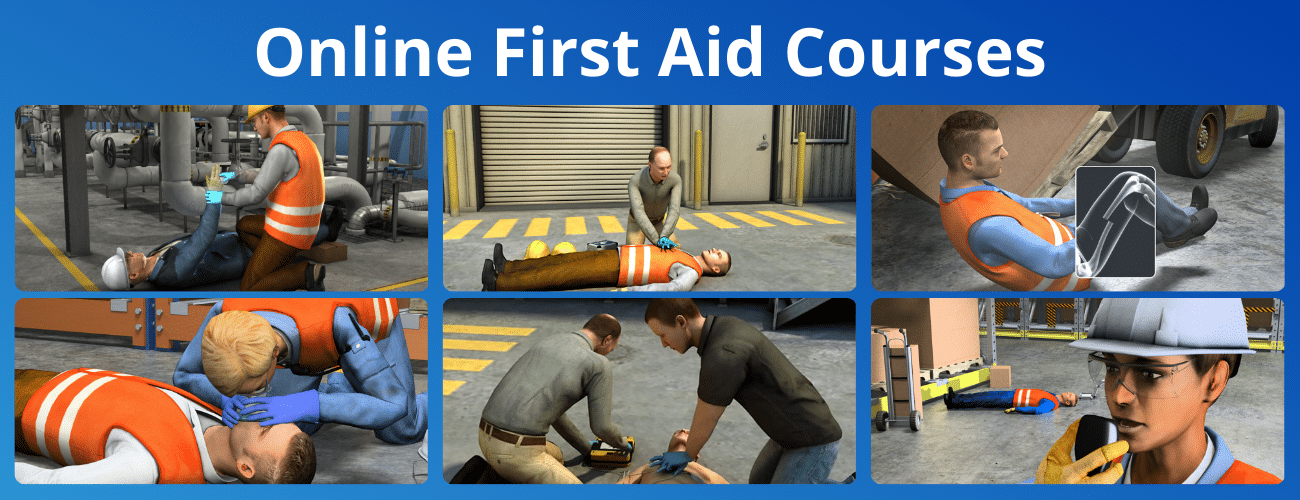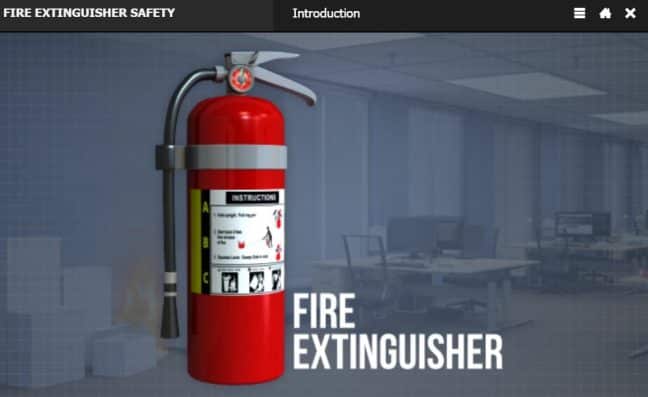May 9, 2024 6 min read

First Aid Training Tips to Improve Workplace Health & Safety
Industry:
Solution:

In high-risk industries such as Construction, Industrial Manufacturing, and the Energy sector, ensuring the safety and well-being of employees is essential. One of the foundational pillars of workplace safety is first aid training. Equipping employees with the knowledge and skills to respond effectively to emergencies can save lives and mitigate the long-term impact of workplace illness and injuries. However, first aid training is not merely a box to check: it requires ongoing refresher training and attention. In this blog, we’ll explore essential first aid training tips to help you minimize risks and improve employee safety.
7 First Aid Training Tips
So, how do you create a training program that effectively educates your workforce in how to administer first aid swiftly, correctly, and with confidence? Use these seven first aid training tips to build your program:
- Use an LMS: Implementing a Learning Management System allows for centralized management of training materials, scheduling, and reporting to track employee progress and identify areas for improvement.
- Use Updated Training: Use first aid training materials that follow the latest guidance and best practices from regulatory bodies like the Red Cross.
- Use a Blended Learning Approach: Combine online modules with hands-on practice to create a comprehensive learning experience. Blended learning approaches cater to different learning styles and reinforce key first aid skills through repetition and application.
- Assess Competency: Conduct competency assessments to evaluate employees’ mastery of key first aid skills and knowledge.
- Provide Regular Refresher Training: First aid skills can deteriorate over time without regular practice and reinforcement. Schedule periodic refresher training to keep employees’ skills sharp and up to date with the latest guidelines.
- Promote a Safety Culture: Foster a safety culture where employees feel empowered to act in emergencies. Encourage open communication and reward safety-conscious behavior.
- Tailor Training to Job Roles: Different job roles may require specific first aid skills and knowledge. Tailor training programs to the unique needs of different departments and job functions, ensuring that employees receive relevant and targeted instruction based on their responsibilities and risks.
First Aid Best Practices
First aid is the immediate assistance or treatment given to someone who has been injured or suddenly taken ill before professional medical help arrives. In high-risk industries, adhering to a few best practices can make all the difference in mitigating the severity of injuries and ensuring the safety of everyone on site.
Continuous training and reinforcement of these best practices are essential to ensure that employees are equipped to respond effectively in times of crisis.
1. Prioritize Safety
When someone is hurt, most people’s first reaction is to immediately go help. But the first rule for someone administering first aid is to stop to ensure their own safety and that of the injured party before acting.
Conduct a quick assessment of the surroundings to identify any potential hazards, such as live electrical wires, toxic substances, or unstable structures. Only proceed with the necessary precautions in place to prevent further harm.
2. Assess the Situation and Victim
Once it’s safe to assist someone who is injured, it’s important to assess the situation and condition of the victim. Take the time to determine the nature and severity of the injury or illness, as this will dictate the appropriate course of action. During this assessment, it’s important to remain calm and focused, gathering as much information as possible to relay to emergency services if needed.
3. Call for Help
In any emergency, prompt communication with emergency services can mean the difference between life and death. Call for professional medical assistance immediately, providing clear and concise information about the emergency and the incident’s location. Designate someone to make the call while others attend to the victim.
4. Be Mindful of Head and Spinal Injuries
In industries where falls are common, it’s essential to be mindful of the potential for head and spinal injuries. Avoid moving the victim unless absolutely necessary, as this can worsen their condition. Stabilize the head and neck using improvised supports and await professional medical assistance.
Why First Aid Training Matters
The importance of first aid training cannot be overstated. First aid training serves as a critical line of defense against workplace injuries and medical emergencies.
First Aid Training Tip: Don’t forget to include why first aid is important in your training program. This helps employees take it more seriously and empower them to act in emergencies.
Here’s why investing in comprehensive first aid training is not just beneficial but essential:
First Aid Saves Lives
First and foremost, first aid training equips employees with the skills and confidence to act swiftly and effectively in emergency situations.
The Red Cross found that 59% of deaths from injuries could have been prevented with timely first aid prior to emergency services arriving.
First Aid Reduces Recovery Time and Hospitalizations
First aid can significantly reduce the severity of injuries and expedite the recovery process. By administering appropriate care at the scene, employees can prevent injuries from worsening and minimize the need for prolonged hospitalization. This not only benefits the injured individual but also reduces the burden on healthcare systems and minimizes the impact on productivity within the organization.
First Aid Prevents Injuries from Deteriorating
Many workplace injuries have the potential to deteriorate rapidly if left untreated. Whether it’s controlling bleeding, stabilizing fractures, or managing shock, timely intervention through first aid can prevent minor injuries from escalating.
First Aid Leads to Cost Savings
Beyond the human benefits, investing in first aid training can yield substantial cost savings for your company. Swift intervention through first aid can lead to shorter recovery times, reduced hospitalization costs, and decreased absenteeism due to workplace injuries.

First Aid Training Courses from Vector Solutions
First aid training is not just a regulatory requirement; it’s a strategic investment in the health, safety, and resilience of employees and organizations.
If you’re looking for online first aid training that adheres to regulatory standards and best practices, look no further. Vector Solutions regularly updates our training to provide the latest, most accurate information on topics like how to administer first aid.
The following courses are a sample of the over 15 first aid courses we offer:
- First Aid – Initial Steps: This course provides guidelines for what to do in an emergency and in what order.
- First Aid – Bleeding Emergencies: The number one cause of preventable death after an injury is bleeding. This course trains employees in how to respond during a bleeding emergency.
- First Aid – Breathing Emergencies: Numerous causes can lead to an employee being unable or struggling to breathe. This course trains employees in the causes, symptoms and first aid for breathing-related incidents.
- First Aid – Cardiopulmonary Resuscitation (CPR): Proper CPR training saves lives. This online course explains when and how to perform CPR.
- First Aid – Automated External Defibrillator (AED): This course trains employees on how and when to use automatic and semi-automatic AEDs.
- Safety Case Study: First Aid Administration: This case study shows why prompt first aid is so important.
We also offer a range of specific first aid courses, from how to treat animal/bug bites to how to respond when someone has a seizure. Request a demo today to learn more.












